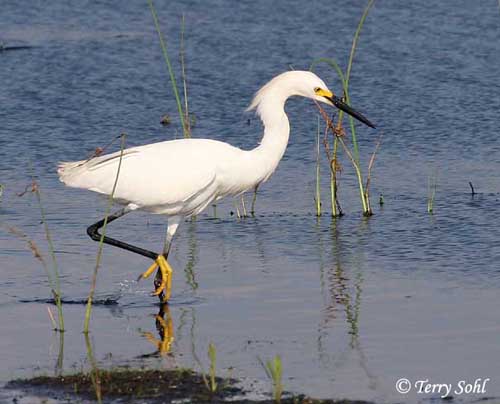Snowy Egret
(Egretta thula)
Snowy egrets are found
throughout North, Central, and South America as well as the Caribbean.
Snowy egrets generally
prefer an environment of shallow water, and Salt-marsh pools, tidal channels,
shallow bays, and mangroves are among the most preferred habitats in North
America.
Kingdom
Animalia
Phylum
Chordata
Class
Aves
Order
Ciconiiformes
Family
Ardeidae
Genus
Egretta
Species
Egretta thula
Domain
Eukaraya
A Snow egret has a
bilateral symmetry which means that if you were to fold it in half then it
would match up. A Snowy egret has a
medium-sized heron with a delicate build. Adult egrets’ general Snowy egret has
entirely white plumage, a long, slender black bill, bright yellow lores, and
long, slender black legs with bright yellow feet. Eyes are yellow. Y measure
between 56 to 66 cm and have a wingspan of approximately 100 cm. walks upright
with its wings held close to its body. This upright posture is ideal for
foraging, because it allows the egret to make quick directional changes to
catch its prey. They are most active at dawn and dusk (crepuscular); they have
flying capabilities but do not swim. Snowy egrets engage in various
self-maintenance behaviors that include grooming their wings, head-scratching
to remove insects on their body, and bathing. Snowy egrets use one foot to stir
up the bottom, flushing prey into view. Snowy egrets will also hover, and then
drop to the water to catch prey in their bills. Its predators include American alligators and snakes ect. Their
preys include insects, crabs and shrimp. A Snowy egret is heterotrophic. It also
happens to endothermic. www.googleimages,com
www.googleimages,com
 www.googleimages,com
www.googleimages,com
No comments:
Post a Comment